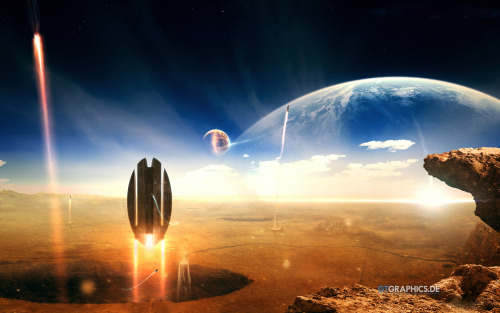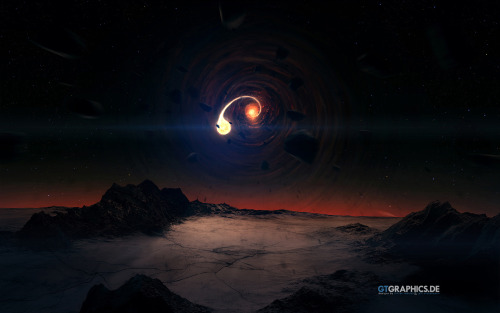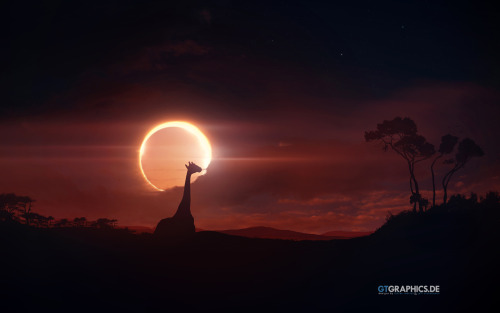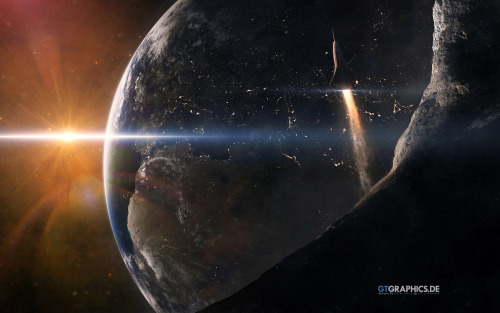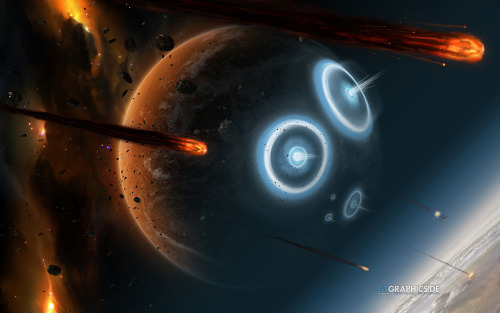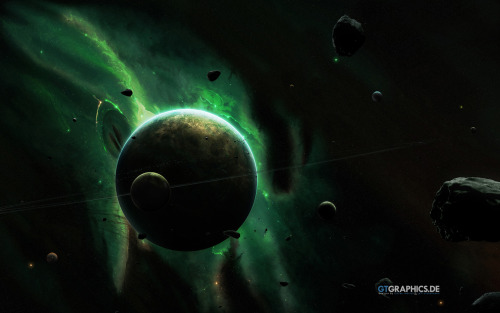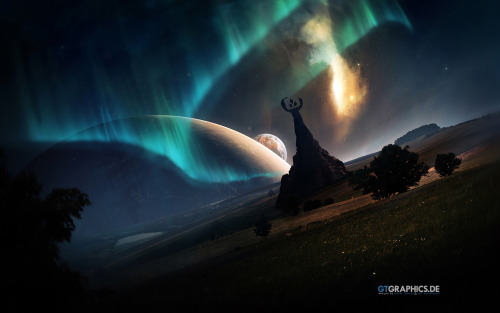Experience Tumblr like never before
Nasabeyond - Blog Posts

Wispy remains of a supernova explosion hide a possible 'survivor.' Of all the varieties of exploding stars, the ones called Type Ia are perhaps the most intriguing. Their predictable brightness lets astronomers measure the expansion of the universe, which led to the discovery of dark energy. Yet the cause of these supernovae remains a mystery. Do they happen when two white dwarf stars collide? Or does a single white dwarf gorge on gases stolen from a companion star until bursting? If the second theory is true, the normal star should survive. Astronomers used the Hubble Space Telescope to search the gauzy remains of a Type Ia supernova in a neighboring galaxy called the Large Magellanic Cloud. They found a sun-like star that showed signs of being associated with the supernova. Further investigations will be needed to learn if this star is truly the culprit behind a white dwarf's fiery demise.
This supernova remnant is located 160,000 light-years from Earth. The actual supernova remnant is the irregular shaped dust cloud, at the upper center of the image. The gas in the lower half of the image and the dense concentration of stars in the lower left are the outskirts of a star cluster.
Image credit: NASA, ESA and H.-Y. Chu (Academia Sinica, Taipei)

Glittering Frisbee Galaxy: This image from Hubble's shows a section of a spiral galaxy located about 50 million light-years from Earth. We tend to think of spiral galaxies as massive and roughly circular celestial bodies, so this glittering oval does not immediately appear to fit the visual bill. What's going on? Imagine a spiral galaxy as a circular frisbee spinning gently in space. When we see it face on, our observations reveal a spectacular amount of detail and structure. However, the galaxy frisbee is very nearly edge-on with respect to Earth, giving it an appearance that is more oval than circular. The spiral arms, which curve out from the galaxy's dense core, can just about be seen. Although spiral galaxies might appear static with their picturesque shapes frozen in space, this is very far from the truth. The stars in these dramatic spiral configurations are constantly moving as they orbit around the galaxy's core, with those on the inside making the orbit faster than those sitting further out. This makes the formation and continued existence of a spiral galaxy's arms something of a cosmic puzzle, because the arms wrapped around the spinning core should become wound tighter and tighter as time goes on - but this is not what we see. This is known as the winding problem. Image credit: ESA/Hubble & NASA For more information on this image, visit: https://go.nasa.gov/2niODGL
Stretched Loops: When an active region rotated over to the edge of the sun, it presented us with a nice profile view of its elongated loops stretching and swaying above it (March 8/9, 2017). These loops are actually charged particles (made visible in extreme ultraviolet light) swirling along the magnetic field lines of the active region. The video covers about 30 hours of activity. Also of note is a darker twisting mass of plasma to the left of the active region being pulled and spun about by magnetic forces.
Credit: Solar Dynamics Observatory, NASA
2016: This Year at NASA!
As 2016 comes to a close and prospects of the new year loom before us, we take a moment to look back at what we’ve accomplished and how it will set us ahead in the year to come.

2016 marked record-breaking progress in our exploration activities. We advanced the capabilities needed to travel farther into the solar system while increasing observations of our home and the universe, learning more about how to continuously live and work in space and, or course, inspiring the next generation of leaders to take up our journey to Mars and make their own discoveries.
Here are a few of the top NASA stories of 2016...
International Space Station
One Year Mission…completed!

NASA astronaut Scott Kelly and Russian cosmonaut Mikhail Kornienko returned to Earth after spending a year in space. Testing the limits of human research, findings from their One Year Mission will help send humans farther into space than ever before.
Commercial Resupply

Commercial partners Orbital ATK and SpaceX delivered tons (yes literally tons) of cargo to the International Space Station. This cargo supported hundreds of science experiments and technology demonstrations crucial to our journey to Mars.
Mars
Expandable Habitats

The Bigelow Expandable Activity Module (BEAM) was one of the technology demonstrations delivered to the space station in April. Expandable habitats greatly decrease the amount of transport volume for future space missions.
Booster Test Firing

In June, a booster for our Space Launch System (SLS) rocket successfully fired up. It will be used on the first un-crewed test flight of SLS with the Orion spacecraft in 2018. Eventually, this rocket and capsule will carry humans into deep space and one day…Mars!
InSight

This year we updated the milestones for our InSight mission with a new target launch window beginning in May 2018. This mission will place a fixed science outpost on Mars to study its deep interior. Findings and research from this project will address one of the most fundamental questions we have about the planetary and solar system science…how in the world did these rocky planets form?
Solar System and Beyond
Juno

On July 4, our Juno spacecraft arrived at Jupiter. This mission is working to improve our understanding of the solar system’s beginnings by revealing the origin and evolution of Jupiter.
OSIRIS-REx

In September, we launched our OSIRIS-REx spacecraft…which is America’s first-ever asteroid sample return mission. This spacecraft will travel to a near-Earth asteroid, called Bennu, where it will collect a sample to bring back to Earth for study.
James Webb Space Telescope

In February, the final primary mirror segment of our James Webb Space Telescope was installed. This will be the world’s most powerful space telescope ever, and is scheduled to launch in 2018. Webb will look back in time, studying the very first galaxies ever formed.
Kepler

In May, our Kepler mission verified the discovery of 1,284 new planets. Kepler is the first NASA mission to find potentially habitably Earth-sized planets.
Earth Right Now
Earth Expeditions

Our efforts to improve life on Earth included an announcement in March of a collection of Earth Science field campaigns to study how our planet is changing. These Earth Expeditions sent scientists to places like the edge of the Greenland ice sheet to the coral reefs of the South Pacific to delve into challenging questions about how our planet is changing…and what impacts humans are having on it.
Small Satellites

In November, we announced plans to launch six next-generation Earth-observing small satellite missions. One uses GPS signals to measure wind in hurricanes and tropical systems in greater detail than ever before.
Aeronautics Research
Our efforts in 2016 to make air travel cleaner, safer and quieter included new technology to improve safety and efficiency of aircraft arrivals, departures and service operations.
X-Plane

In June, we highlighted our first designation of an experimental airplane, or X-plane, in a decade. It will test new electric propulsion technology.
Drone Technolgy

In October, we evaluated a system being developed for the Federal Aviation Administration to safely manage drone air traffic.
Technology
Electric Propulsion

We selected Aerojet Rocketdyne to develop and advanced electric propulsion system to enable deep space travel to an asteroid and Mars.
Spinoffs

Our technology transfer program continued to share the agency’s technology with industry, academia and other government agencies at an unprecedented rate.
Centennial Challenges

Our Centennial Challenges program conducted four competition events in 2016 to spark innovation and enable solutions in important technology focus areas.
Watch the full video recap of ‘This Year @NASA’ here:
Make sure to follow us on Tumblr for your regular dose of space: http://nasa.tumblr.com
House of Horrors: Exoplanet Edition
Astronomers may be closer than ever to discovering a planet that’s habitable like our own, but along the way they’ve discovered some very scary exoplanets – places where conditions are far too harsh for life as we know it to exist.
Okay, but what IS an exoplanet???

We’ve rounded up some of the most frightening, deadly exoplanets, places that make even the scariest haunted house on Earth pale in comparison. Check them out...
Radiation Bath, Anyone?
The exoplanets PSR B1257+12 B, C & D were among the first discovered, and also happened to be three of the weirdest! The entire system is a graveyard, remnants of what used to be a normal, functional solar system before the star blew apart in a giant explosion known as a supernova.

The massive shockwave from the supernova stripped away any atmosphere or living creatures that might have once lived on these planets, leaving behind ghostly, rocky shells, dead planets orbiting the corpse of an extinct star.
Except that the system isn’t completely dead…the remaining core from the old star has become a zombie star called a pulsar. Literally spinning in its grave, it makes a full rotation every 6.22 milliseconds and emits an intense beam of radiation that can be detected from Earth. The star’s unfortunate planets are thus bathed in deadly radiation on a regular basis, making sure that this system remains a cosmic no-man’s land.
A Mighty Wind
The sound of howling wind is a must for any Earth-based haunted house, but weather conditions on HD 189733 b make it a very dangerous place to go trick-or-treating.
At first glance, this exoplanet looks like the typical “hot Jupiter” — a huge gas planet perched dangerously to a burning-hot star, with daytime temperatures around a balmy 1,770 degrees Fahrenheit. This exoplanet is also “tidally locked” in its orbit, which means that the same side of the planet always faces its star.

But when scientists measured the planet’s nighttime temperature, they were shocked to find that it was only 500 degrees cooler. How does the back side of the planet stay so warm?
The answer is wind! Insanely fast, dangerous wind that whisks heat from day-side to night-side at a speed of 4,500 mph, nearly six times the speed of sound! In fact, astronomers estimate that wind speeds might top out at 5,400 mph, conditions that make hurricanes on Earth look like a breezy day at the beach.
Newborn Exoplanet Around Scorching Star
This exoplanet, named K2-33b, is the youngest fully formed exoplanet ever detected. This planet is a bit larger than Neptune and whips tightly around its star every five days. Since this planet sits nearly 10 times closer to its star than Mercury is to our sun, it’s HOT!

No matter how cute you think infants are, this is one baby you’d want to stay away from.
Boil, Boil, Toil and Trouble
The planet HD 209458 b (aka. Osiris - the god of death) has a few things in common with Earth: water vapor, methane and carbon dioxide in its atmosphere, key ingredients for life on our planet. Don’t be fooled, though, because this planet is a rolling cauldron of almost unimaginable heat.

Even the hottest summer days on Earth don’t get as dangerous as the conditions here. A planet that orbits so close to its host star that its atmosphere is literally boiling off, ripped away from the planet as it whips around on its breakneck 3.5-day orbit.
All Alone and Very, Very Cold
While most of the exoplanets found so far are hellishly hot, OGLE-2005-BLG-390L b has the distinction of being extremely cold.
The planet takes about 10 Earth years to orbit its tiny dwarf star, and it’s a chilly trip; the average temperature on this exoplanet is 50 Kelvin, or minus 370 degrees Fahrenheit! A good costume for trick-or-treating on this frigid planet would be a toasty self-heating spacesuit, an oxygen supply, ice skates and plenty of hot cocoa.

Of course, don’t expect to find many houses with candy here, because despite the fact that it’s just a few times bigger than Earth, this exoplanet is an uninhabitable ice ball stuck in a perpetual winter freeze.
A Scorched World
Kepler-10b is a scorched world, orbiting at a distance that’s more than 20 times closer to its star than Mercury is to our own sun. The daytime temperatures are expected to be more than 2,500 degrees Fahrenheit, hotter than lava flows here on Earth.

Intense radiation from the star has kept the planet from holding onto an atmosphere, but flecks of silicates and iron that have boiled off a molten surface are swept away by the stellar radiation.
Learn more about worlds beyond our solar system at: https://exoplanets.nasa.gov/
Make sure to follow us on Tumblr for your regular dose of space: http://nasa.tumblr.com
Eight Things to Know About Our Flying Observatory
Our flying observatory, called SOFIA, is the world’s largest airborne observatory. It is a partnership with the German Aerospace Center (DLR). SOFIA studies the life cycle of stars, planets (including Pluto’s atmosphere), how interstellar dust can contribute to planet formation, analyzes the area around black holes, and identifies complex molecules in space.
1. A Telescope in an Airplane

SOFIA stands for the Stratospheric Observatory for Infrared Astronomy. It is a Boeing 747SP aircraft that carries a 100-inch telescope to observe the universe while flying between 38,000 and 45,000 feet – the layer of Earth’s atmosphere called the stratosphere.
2. The Short Aircraft Means Long Flights

SP stands for “special performance.” The plane is 47 feet shorter than a standard 747, so it’s lighter and can fly greater distances. Each observing flight lasts 10-12 hours.
3. It Flies with A Hole in the Side of the Plane…

The telescope is behind a door that opens when SOFIA reaches altitude so astronomers on board can study the universe. The kind of light SOFIA observes, infrared, is blocked by almost all materials, so engineers designed the side of the aircraft to direct air up-and-over the open cavity, ensuring a smooth flight.
4. …But the Cabin is Pressurized!

A wall, called a pressure bulkhead, was added between the telescope and the cabin so the team inside the aircraft stays comfortable and safe. Each flight has pilots, telescope operators, scientists, flight planners and mission crew aboard.
5. This Telescope Has to Fly

Water vapor in Earth’s atmosphere blocks infrared light from reaching the ground. Flying at more than 39,000 feet puts SOFIA above more than 99% of this vapor, allowing astronomers to study infrared light coming from space. The airborne observatory can carry heavier, more powerful instruments than space-based observatories because it is not limited by launch weight restrictions and solar power.
6. Studying the Invisible Universe

Humans cannot see what is beyond the rainbow of visible light. However, many interesting astronomical processes happen in the clouds of dust and gas that often surround the objects SOFIA studies, like newly forming stars. Infrared light can pass through these clouds, allowing astronomers to study what is happening inside these areas.
7. The German Telescope

The telescope was built our partner, the German Aerospace Center, DLR. It is made of a glass-ceramic material called Zerodur that does not change shape when exposed to extremely cold temperatures. The telescope has a honeycomb design, which reduces the weight by 80%, from 8,700 lb to 1,764 lb. (Note that the honeycomb design was only visible before the reflective aluminum coating was applied to the mirror’s surface).
8. ZigZag Flights with a Purpose

The telescope can move up and down, between 20-60 degrees above the horizon. But it can only move significantly left and right by turning the whole aircraft. Each new direction of the flight means astronomers are studying a new celestial object. SOFIA’s flight planners carefully map where the plane needs to fly to best observe each object planned for that night.
Make sure to follow us on Tumblr for your regular dose of space: http://nasa.tumblr.com
Hubble Space Telescope
You’ve probably heard of our Hubble Space Telescope, but have you had the chance to actually take a look at the amazing images it has captured for us over the years? Since Hubble launched in April 1990, it has made more than 1.2 million observations, some to locations more than 13.4 billion light years from Earth!
Hubble can see astronomical objects with an angular size of 0.05 arc seconds, which is like seeing a pair of fireflies in Tokyo from your home in Maryland…yea, that’s pretty far! This accuracy allows us to see images like this one of Little Gem Nebula, roughly 6,000 light-years away from us.

Images from Hubble are regularly released to the public, and are some of the most breathtaking views in the Universe. Images like this one of Lagoon Nebula, in the constellation of Sagittarius, not only make for amazing desktop screen-savers, but provide us with valuable scientific information about distant stars and galaxies, as well as the planets in our solar system.

We recently celebrated Hubble’s 25th Anniversary, and look forward to many more years of discovery and captivating images.
